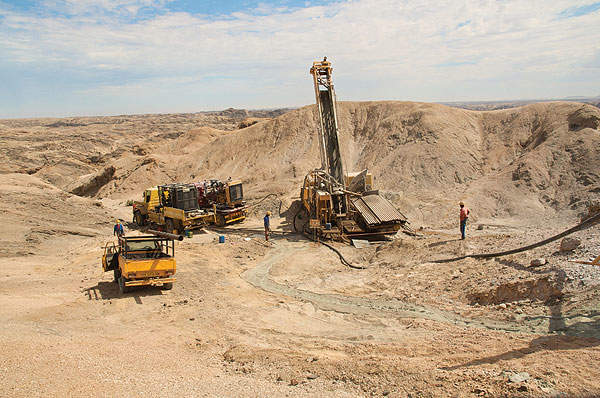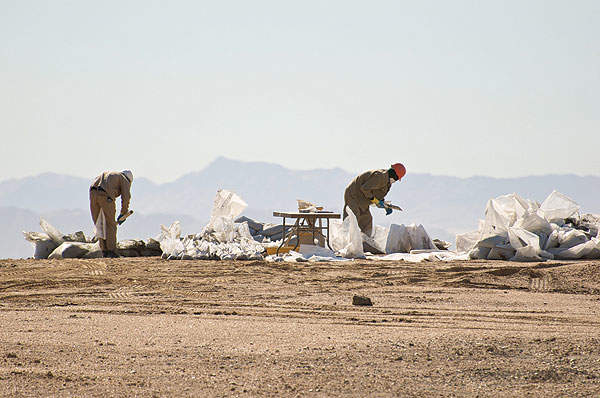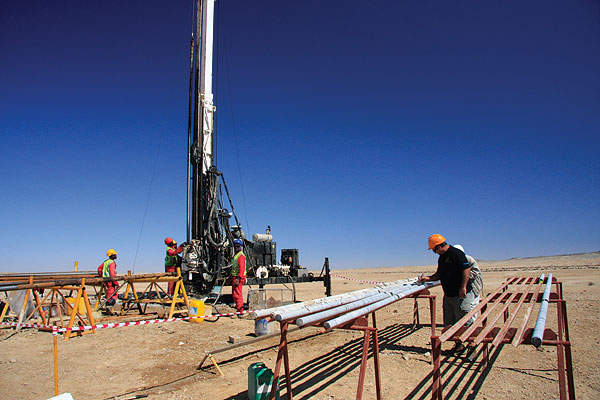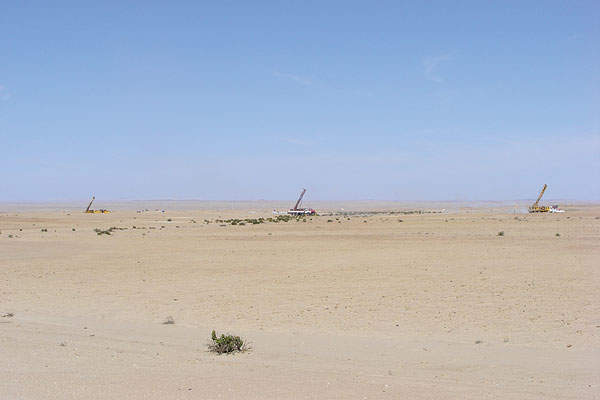Etango uranium project is located in the Erongo uranium province in Namibia. It is one of the largest undeveloped uranium mines in the world.
Bannerman Mining Resources (Namibia), a subsidiary of Bannerman Resources, is the operator of the mine. Bannerman Resources owns an 80% interest in the project, while the remaining amount is held by an independent director, Clive Jones.
Bannerman has entered into an agreement with state-owned Epangelo Mining, under which it may acquire a five percent interest in the mine.
A Scoping Study for the mine’s development was completed in September 2007, followed by a Preliminary Feasibility Study (PFS). Results of the PFS were announced in December 2009. A Definitive Feasibility Study (DFS) was completed by AMEC in April 2012.
The mine is expected to operate for more than 16 years, producing seven to nine million pounds (Mlbs) of triuranium octoxide (U3O8) annually during the first five years and six to eight million pounds thereafter. This makes the mine one of the top ten uranium mines in the world. First production from Etango is expected in 2014/2015.
Anomaly A, Oshiveli and Onkelo prospects and Etango mine resources
The Etango mine consists of three prospects named Anomaly A, Oshiveli and Onkelo. These prospects contain uraniferous sheeted leucogranite bodies or alaskites, which have intruded into metasediments of the Nosib (Khan and Etusis formations) and Swakop groups (Chuos formation) of the Damara Sequence.
The alaskites contain quartz along with feldspar and other minerals, such as ilmenite, biotite, apatite, garnet, tourmaline, uraninite, zircon and monazite.
Measured resources of the mine are 62.7mt grading at 205ppm for 28.3Mlbs of U3O8. Indicated resources are 273.5mt grading at 200ppm for 120.4Mlbs of U3O8. Inferred resources are 164.6mt grading at 176ppm for 63.9Mlbs of U3O8.
Uranium mineralisation at the Namibian Etango deposit
The uranium mineralisation at the Etango mine is found in the alaskite granites. The main alaskite mineralised body is the Khan and Chuos formation. Alaskite bodies have been classified into six types (A-F). Most of the uranium mineralisation occurs in the type E and type D alaskite bodies.
Development of the Etango mine as an open-pit
The Etango mine will be developed as a conventional open-pit mine. The mining will be carried out by 550t hydraulic back-hoe excavators and 220t diesel / electric haul trucks. End-of-mine depth is 240m with an average waste to ore strip ratio of 3:3.
Tests conducted on the ore samples recovered from the mine revealed that the ore is free from clay and acid consuming carbonates. In addition, the majority of the mineralisation is available at coarse crush size. These results led to the conclusion that heap leaching is the most suitable method for optimal recovery.
Ore processing at Bannerman Mining Resources’ West African deposit
Etango will include a 15mt heap leaching plant with a three stage crushing circuit. Mined ore is fed to the crushing circuit. The first stage of crushing is carried out in the gyratory primary crusher. The crushed ore is transferred onto coarse ore stockpile. Two more stages of crushing follow to deliver a crushed product, four millimetres in size.
Two agglomerating drums transfer the crushed ore to the heap leach pad along with water, sulphuric acid and binder. The sulphuric acid leaches the uranium minerals into a pregnant liquor solution (PLS).
The PLS is processed through solvent extraction, which includes various stages such as extraction, scrubbing, stripping, organic regeneration and crud removal. The next step includes the precipitation circuit which adds anhydrous ammonia to raise the pH to around seven. This causes the precipitation of ammonium-diuranate, which is thickened and removed.
Uranium solids recovered from the precipitate are dewatered to remove any impurities. They are then washed in centrifuges and calcined. The calcined uranium oxide and U3O8 are transferred into a product bin.
Transporting recovered uranium and U308 via Walvis Bay port
Etango is well connected by road, rail and sea. The recovered uranium oxide and U3O8 are packed into 200l steel drums for transportation in sea containers through the Walvis Bay deep-water port.









